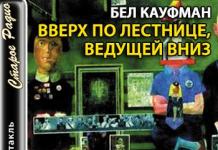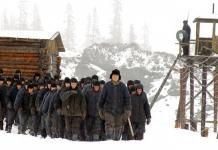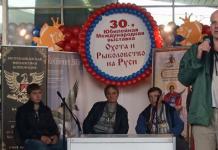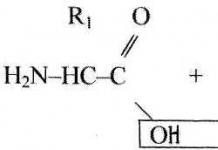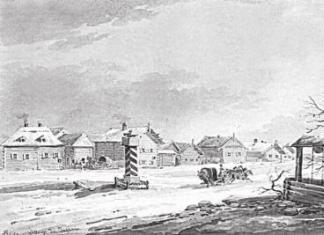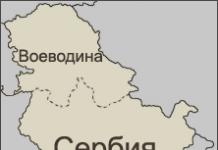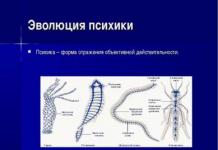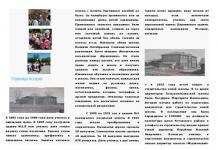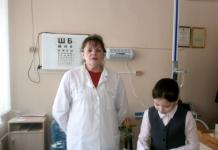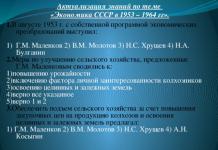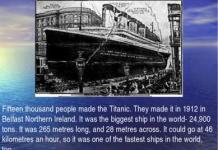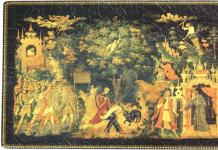Engineering Connection
Why do engineers care about simple machines? How do such devices help engineers improve society? Simple machines are important and common in our world today in the form of everyday devices (crowbars, wheelbarrows, highway ramps, etc.) that individuals, and especially engineers, use on a daily basis. The same physical principles and mechanical advantages of simple machines used by ancient engineers to build pyramids are employed by today's engineers to construct modern structures such as houses, bridges and skyscrapers. Simple machines give engineers added tools for solving everyday challenges.
Learning Objectives
After this lesson, students should be able to:
- Understand what a simple machine is and how it would help an engineer to build something.
- Identify six types of simple machines.
- Understand how the same physical principles used by engineers today to build skyscrapers were employed in ancient times by engineers to build pyramids.
- Generate and compare multiple possible solutions to creating a simple lever machine based on how well each met the constraints of the challenge.
Educational Standards
each TeachEngineering lesson or activity is correlated to one or more K-12 science, technology, engineering or math (STEM) educational standards.
All 100,000+ K-12 STEM standards covered in TeachEngineering are collected, maintained and packaged by the Achievement Standards Network (ASN), a project of D2L(www.achievementstandards.org).
In the ASN, standards are hierarchically structured: first by source; e.g., by state; within source by type; e.g., science or mathematics; within type by subtype, then by grade, etc.
NGSS: Next Generation Science Standards - Science
| NGSS Performance Expectations | ||
|---|---|---|
|
3-PS2-2. Make observations and / or measurements of an object "s motion to provide evidence that a pattern can be used to predict future motion. (Grade 3) Do you agree with this alignment? Thanks for your feedback! |
||
| This lesson focuses on the following Three Dimensional Learning aspects of NGSS: | ||
| Science & Engineering Practices | Disciplinary Core Ideas | Crosscutting Concepts |
| Make observations and/or measurements to produce data to serve as the basis for evidence for an explanation of a phenomenon or test a design solution. Alignment agreement: Thanks for your feedback! Science findings are based on recognizing patterns.Alignment agreement: Thanks for your feedback! | The patterns of an object "s motion in various situations can be observed and measured; when that past motion exhibits a regular pattern, future motion can be predicted from it. (Boundary: Technical terms, such as magnitude, velocity, momentum, and vector quantities, are not provided at this level and quantities, but also the dimensions and dimensions of the proposed dimensions.) Alignment agreement: Thanks for your feedback! | Patterns of change can be used to make predictions. Alignment agreement: Thanks for your feedback! |
International Technology and Engineering Educators Association - Technology
Lesson Closure
Today, we have discussed six simple machines. Who can name them for me? (Answer: Wedge, wheel and axle, lever, inclined plane, screw, and pulley.) How do simple machines make work easier? (Answer: Mechanical advantage enables us to use less force to move an object, but we have to move it a longer distance.) Why do engineers use simple machines? (Possible answers: Engineers creatively use their knowledge of science and math to make our lives better, often using simple machines. They invent tools that make work easier. They accomplish huge tasks that could not be done without the mechanical advantage of simple machines. They design structures and tools to use our environmental resources better and more efficiently.) Tonight, at home, think about everyday examples of the six simple machines. See how many you can find around your house!
Complete the KWL Assessment Chart (see the Assessment section). Gauge students" understanding of the lesson by assigning the Simple Machines Worksheet as a take-home quiz. As an extension, use the attached to conduct a simple machines scavenger hunt in which students find examples of simple machines used in the classroom and at home.
In other lessons of this unit, students study each simple machine in more detail and see how each could be used as a tool to build a pyramid or a modern building.
Vocabulary/Definitions
Design:(verb) To plan out in a systematic, often graphic form. To create for a particular purpose or effect. Design a building. (noun) A well thought-out plan.
engineering: Applying scientific and mathematical principles to practical ends such as the design, manufacture and operation of efficient and economical structures, machines, processes and systems.
force: A push or pull on an object.
Inclined plane: A simple machine that raises an object to greater height. Usually a straight slanted surface and no moving parts, such as a ramp, sloping road or stairs.
lever: A simple machine that increases or decreases the force to lift something. Usually a bar pivoted on a fixed point (fulcrum) to which force is applied to do work.
mechanical advantage: An advantage gained by using simple machines to accomplish work with less effort. Making the task easier (which means it requires less force), but may require more time or room to work (more distance, rope, etc.). For example, applying a smaller force over a longer distance to achieve the same effect as applying a large force over a small distance. The ratio of the output force exerted by a machine to the input force applied to it.
Pulley: A simple machine that changes the direction of a force, often to lift a load. Usually consists of a grooved wheel in which a pulled rope or chain runs.
pyramid: A massive structure of ancient Egypt and Mesoamerica used for a crypt or tomb. The typical shape is a square or rectangular base at the ground with sides (faces) in the form of four triangles that meet in a point at the top. Mesoamerican temples have stepped sides and a flat top surmounted by chambers.
screw: A simple machine that lifts or holds materials together. Often a cylindrical rod incised with a spiral thread.
simple machine: A machine with few or no moving parts that is used to make work easier (provides a mechanical advantage). For example, a wedge, wheel and axle, lever, inclined plane, screw, or pulley.
Spiral: A curve that winds around a fixed center point (or axis) at a continuously increasing or decreasing distance from that point.
tool: A device used to do work.
wedge: A simple machine that forces materials apart. Used for splitting, tightening, securing or levering. It is thick at one end and tapered to a thin edge at the other.
Wheel and axle: A simple machine that reduces the friction of moving by rolling. A wheel is a disk designed to turn around an axle passed through the center of the wheel. An axle is a supporting cylinder on which a wheel or a set of wheels revolves.
work: Force on an object multiplied by the distance it moves. W = F x d (force multiplied by distance).
Assessment
Pre-Lesson Assessment
Know/Want to Know/Learn (KWL) Chart: Create a classroom KWL chart to help organize learning about a new topic. On a large sheet of paper or on the classroom board, draw a chart with the title "Building with Simple Machines." Draw three columns titled, K, W and L, representing what students !} know about simple machines, what they want to know about simple machines and what they are learned about simple machines. Fill out the K and W sections during the lesson introduction as facts and questions emerge. Fill out the L section at the end of the lesson.
Post-Introduction Assessment
Reference sheet: Hand out the attached Simple Machines Reference Sheet . Review the information and answer any questions. Suggest the students keep the sheet handy in their desks, folders or journals.
Lesson Summary Assessment
Closing Discussion: Conduct an informal class discussion, asking the students what they learned from the activities. Ask the students:
- Who can name the different types of simple machines? (Answer: Wedge, wheel and axle, lever, inclined plane, screw, and pulley.)
- How do simple machines make work easier? (Answer: Mechanical advantage enables us to use less force to move an object, but we have to move it a longer distance.)
- Why do engineers use simple machines? (Possible answers: Engineers creatively use their knowledge of science and math to make our lives better, often using simple machines. They invent tools that make work easier. They accomplish huge tasks that could not be done without the mechanical advantage of simple machines. They design structures and tools to use our environmental resources better and more efficiently.)
Remind students that engineers consider many factors when they plan, design and create something. Ask the students:
- What are the considerations an engineer must keep in mind when designing a new structure? (Possible answers: Size and shape (design) of the structure, available construction materials, calculation of materials needed, comparing materials and costs, making drawings, etc.)
- What are the considerations an engineer must keep in mind when choosing a site to build a new structure? (Possible answers: Site physical characteristics , distance to construction resources , suitability for the structure's purpose .)
KWL Chart (Conclusion): As a class, finish column L of the KWL Chart as described in the Pre-Lesson Assessment section. List all of the things they learned about simple machines. Were all of the W questions answered? What new things did they learn?
Take Home Quiz: Gauge students" understanding of the lesson by assigning the Simple Machines Worksheet as a take-home quiz.
Lesson Extension Activities
Use the attached Simple Machines Scavenger Hunt! Worksheet to conduct a fun scavenger hunt. Have the students find examples of all the simple machines used in the classroom and their homes.
Bring in everyday examples of simple machines and demonstrate how they work.
Illustrate the power of simple machines by asking students to do a task without using a simple machine, and then with one. For example, create a lever demonstration by hammering a nail into a piece of wood. Have students try to pull the nail out, first using only their hands
Bring in a variety of everyday examples of simple machines. Hand out one out to each student and have them think about what type of simple machine it is. Next, have students place the items into categories by simple machines and explain why they chose to place their item there. Ask students what life would be like without this item. Emphasize that simple machines make our life easier.
See the Edheads website for an interactive game on simple machines: http://edheads.org.
Engineering Design Fun with Levers: Give each pair of students a paint stirrer, 3 small plastic cups, a piece of duct tape and a wooden block or spool (or anything similar). Challenge the students to design a simple machine lever that will throw a ping pong ball (or any other type of small ball) as high as possible. In the re-design phase, allow the students to request materials to add on to their design. Have a small competition to see which group was able to send the ping pong ball flying high. Discuss with the class why that particular design was successful versus other variations seen during the competition.
Additional Multimedia Support
See http://edheads.org for a good simple machines website with curricular materials including educational games and activities.
References
Dictionary.com. Lexico Publishing Group, LLC. Accessed January 11, 2006. (Source of some vocabulary definitions, with some adaptation) http://www.dictionary.com
Simple Machines. inQuiry Almanack, The Franklin Institute Online, Unisys and Drexel eLearning. Accessed January 11, 2006. http://sln.fi.edu/qa97/spotlight3/spotlight3.html
Contributors
Greg Ramsey; Glen Sirakavit; Lawrence E. Carlson; Jacquelyn Sullivan; Malinda Schaefer Zarske; Denise Carlson, with design input from the students in the spring 2005 K-12 Engineering Outreach Corps courseCopyright
© 2005 by Regents of the University of Colorado.Support Program
Integrated Teaching and Learning Program, College of Engineering, University of Colorado BoulderAcknowledgments
The contents of these digital library curricula were developed by the Integrated Teaching and Learning Program under National Science Foundation GK-12 grant no. 0338326. However, these contents do not necessarily represent the policies of the National Science Foundation, and you should not assume endorsement by the federal government.
Last modified: December 4, 2019
Or. However, some of the most important and useful machines are quite simple. In fact, scientists even call them simple machines!
So what is a simple machine? Is it a machine that does a simple , such as addition or ? Maybe it "s just a machine that"s really easy to operate, like an old television remote control? Or could it be any machine that makes life easier?
While simple machines do make our lives easier, they "re much older than either television remotes or calculators. Simple machines are some of the first machines ever created.
Since the earliest human beings walked on Earth, they looked for ways to make the of everyday life easier to accomplish. Over time, they did this by inventing what has become known as the six simple machines.
Wedges are moving inclined planes used to lift or separate. Wedges are usually used to cut, tear, or break an object into pieces. Common wedges include knives, axes, saws, scissors, and shovels. However, wedges can also be used to hold things in place, such as in the case of staples, nails, shims, or doorstops.
A is a twisted version of an inclined plane. It allows movement to be translated into an up or down motion that takes up less space. Screws can also help hold things together. Common examples of screws include jar lids, drills, light bulbs, and bottle caps.
These six simple machines are all around us. Often more machines, also called machines, consist of one or more of the simple machines put together. Can you imagine how much easier life became after the invention of these simple machines?
M.V. Rudakova (Irkutsk)
Methodical development of a lesson on the topic "Machines and Work" (Machines and work)
annotation
This lesson is held when studying the topic: "Machines and work" with studentsIIIcourse (1 semester) in the specialty110809 "Mechanization of agriculture". The lesson was developed according to the textbook Bgashev V.N., Dolmatovskaya E.Yu. English for students of engineering specialties.Students have already passed the basic stage of training in the discipline, and already have sufficient knowledge of lexical and grammatical material to study a professional English language program. The lesson is intended for an advanced stage of preparation in English and provides a communicative professional orientation of training. On this topic, students have already studied the basic lexical and grammar material, so the class type issystematization and generalization of knowledge. All stages of the lesson are built on uniform methodological principles, develop the main types of foreign language speech activity, form the intercultural competencies of future specialists. Technology used in class communicative learning and collaborative learning technology, and critical thinking technology. To achieve this goal, cognitive methods of motivation, volitional methods (self-assessment and correction, reflection of behavior), as well as the brainstorming method are used. At the stage of building a project, students are encouraged to use, as a technique, a mental map (Mind Map). Particular attention was paid to the study of the lexical aspect, since the student must be able to translate professional texts, communicate on professional topics; independently improve and replenish vocabulary.
All stages of the lesson contribute to the development of speech, language and professional competence and the achievement of educational and educational goals.The subject of assessment is the skills and knowledge provided for by the GEF in the disciplineEnglish aimed at the formation of general and professional competencies.
Lesson topic:"Machines and Work" (Machines and work)
Purpose of the lesson: create conditions for the development of communicative competence.
Lesson objectives:educational: to form lexical speaking skills, to develop semantic reading skills (viewing, searching, studying); developing: develop memory, attention, thinking, logical thinking and linguistic conjecture, teach to analyze, generalize, group); educational; to cultivate cognitive interest in learning a foreign language, to form group work skills.
Formed competencies: OK 1. Understand the essence and social significance of your future profession show a sustained interest in it.
OK 3. Make decisions in standard and non-standard situations and be responsible for them.
OK 4. Search and use the information necessary for the effective implementation of professional tasks, professional and personal development.
OK 5. Own information culture, analyze and evaluate information using information and communication technologies.
OK 6. Work in a team and team, communicate effectively with colleagues, management, consumers.
Lesson type: systematization and generalization of knowledge.
Interdisciplinary connections: Russian language, physics, mechanics, machines, mechanisms.
Class equipment: textbook, projector, computer, screen, presentation, Handout, paper sheets, felt-tip pens, magnets.
Forms of work: individual, group, frontal
Lesson stages. Forms of work
Lesson content. Possible methods and techniques
Main types of educational activities
UUD formed at this stage
Teacher activity
Student activities
Stage of motivation of educational activity
Organizing time
(2 minutes.)
T. Good morning students! I'm glad to see you. It is really fine day today, isn't it? How are you today? What about the weather today? Is it fine? Let's start our lesson.
The teacher greets the students, checks their readiness for the lesson.
Students are included in foreign language communication, reacting to the teacher's remarks, according to the communicative task.
Personal: adequate motivation for learning activities; formation of motivation for learning a foreign language; formation of a positive attitude to the lesson of a foreign language.
Regulatory: self-assessment of readiness for the lesson.
Communicative: listen and respond to the cue adequately to the speech situation.
Lexico-phonetic exercise
(7 min.)
Electricity, effort, motion, distance, rate, weight, horsepower, watt, kilowatt, force, work wind, water, steam, petroleum, prime mover, windmill, turbine, generator, steam engine, internal combustion engine, electric motor
The teacher invites students to pronounce words to develop pronunciation skills.
Students pronounce words which they can then use in their speech, working on pronunciation. Correlate the graphic and sound image of English words.
Regulatory: exercise self-control of correct pronunciation.
Cognitive: extract the information you need from what you hear.
Speech immersion
(7 min.)
T. thank you! Great! Now, students look at the screen, here you can see the car. Let`s try to name the parts of this car and describe them using the model: This is/these are… . N+ is/are made of…
For example: this is a windscreen. The windscreen is made of glass.( Appendix 1 )
The teacher organizes immersion in a foreign language environment, consolidates the skills of using familiar lexical units and a grammatical model.
Students, using previously studied lexical units, describe the car, naming the parts of the car and the materials from which they are made.
Communicative: listen and consciously perceive the speech of other students, correct incorrect answers.
Familiarization with the topic of the lesson, communication of goals
(2 minutes.)
T. Students, as you know a machine is a device that transmits and changes force or motion into work. A machine can be very simple or very complex. Terms like work, force, and power are closely connected with machines. I think you'll try to guess what our lesson will be about. Well, what shall we do today? Yes, you're right, we'll speak about machines and work. We must give the definitions of the words - work, force, power and connect them with "work" and "machines". Is the topic interesting for you?
The teacher allows students to independently determine the topic of the lesson, goals and what is needed for this.
Students independently determine the topic and objectives of the lesson with the help of reference vocabulary.
Cognitive: be able to adequately, consciously and arbitrarily build a speech statement in oral speech.
Regulatory: determine the purpose of learning activities with the help of a teacher; plan your actions to achieve your goals.
II. Stage of updating of basic knowledge
Lexical work
(10 minutes.)
T. 1) To begin with I propose you to divide the following words into three groups, those which describe: 1)basic terms of physics and mechanics; 2)energy sources; 3)mechanisms, machines. ( Appendix 2)
2) The following verbs are often related to basic terms of physics and mechanics. Now, students try to make up word combinations using these verbs: to produce, to transform, to supply, to result in, to exert, to set, to perform, to result from, to measure…in. Model: to transmit motion/force( Appendix 2)
The teacher activates familiar vocabulary, corrects students' answers as necessary.
Students independently perform tasks using previously studied lexical units. Record your answers in a table. Checking and correcting the completed task.
Communicative: conscious construction of speech statements, reflection.
Regulatory: study of the conditions of the educational task, discussion of solutions.
Cognitive: argumentation of your point of view.
speaking, predicting
(4 min.)
T. Look at the screen, here you can see the terms. The task is to match each one with its correct definition.
(Annex 3)
The teacher checks the correctness of the assignment.
Students choose the appropriate definition for each term.
Brain teaser:
Cognitive: be able to analyze information.
III. Stage of independent work with self-examination according to the model
semantic reading
(14 min.)
T. well done. Let`s continue our lesson. Read the text “Machines and work”, try to focus on its essential facts, and choose the most suitable heading below for each paragraph: 1) Prime movers 2) Definition of “machine” 3) The relationship between “work” and “force » 4) Power and its measures.
You should also find the definitions of basic terms connected with "machines" and "work". Text A is on page 192 .
The teacher informs students about the algorithm for working on reading.
Students read the text with an understanding of the main content, select headings for paragraphs and find definitions for the main concepts related to “work” and “machines”.
Brain teaser: develop the ability to focus, guess and logic.
Regulatory: improve the skills of semantic reading, using the vocabulary of the lesson.
Cognitive: develop semantic reading; to search and highlight the necessary information; be able to organize knowledge.
Self-examination and self-assessment
(5 minutes.)
T. Time is running. Let's check your tasks.
The teacher controls how students argue their point of view, corrects their answers.
Students discuss the read text, give definitions to the basic concepts related to "work" and "machines".
Regulatory: be able to correctly assess the results of their work and classmates.
Communicative: be able to listen to each other to perceive the necessary information and maintain a conversation.
speaking. Group work
(12 min.)
T. Well, let's go on. Now, students, we`ll have a group work. I will give you some questions about the text and you should answer them.( Appendix 4)
The teacher divides the students into two groups and gives questions for discussion.
Students are divided into two groups and draw questions on the read text. Discuss questions and answers. Use ready-made speech materials for the preparation of answers.
Communicative: participate in the work of the group, exercise mutual control and mutual assistance; be active in interaction to solve common problems.
Cognitive: be able to compare and select information from the text, consciously build a speech statement in oral form.
Personal: develop skills of cooperation, take initiative.
IV. Project building stage
Reading in order to extract special information (work in groups)
(15 minutes.)
T. Students, your task is to give a short report about "Machine, Work, Power".
The teacher sets the task for the groups to prepare the message “Machine, work, power” using the active dictionary, which was compiled during the lexical work at the stage of updating the basic knowledge. The teacher offers the students a sheet of drawing paper to design their message.
Students create a mental map using information from the text and a table. (Appendix 2), Decide who will talk about what.
Communicative: participation in the work of the group: distribution of responsibilities, planning their part of the work, mutual control, mutual assistance; formulate their thoughts in accordance with the educational task.
Cognitive: the ability to analyze, group facts, build logical reasoning; the ability to highlight the main facts, omitting the secondary ones.
Personal: show initiative and independence, strive to improve their own speech culture.
Regulatory: accept and save the learning task, compare the results of your work with the results of others.
V. The stage of verification of the implementation of the constructed project
Design check
(8 min.)
T. So, it`s time to begin to represent your projects.
The teacher determines the level of assimilation of the necessary knowledge.
Students talk about the basic concepts of physics and mechanics, mechanisms and energy sources and show their relationship with machines and work. Their messages are accompanied by a demonstration of the project on a sheet of drawing paper (Mind Map).
Cognitive: the ability to consciously build a speech statement in oral form, improve speech skills.
Communicative: form their own opinion and position; argue your point of view; participate in the work of the group.
IV. The stage of reflection of educational activities in the classroom
Summing up the work
(1.5 min.)
T. Now we come to the end of the lesson. Do you remember the topic? What did we study today? What was new for you? Let's review the new vocabularies in chain.
The teacher asks questions. Gives grades for the lesson, comments, motivates for further successful work.
Students answer the teacher's questions and express their opinion.
Regulatory: the ability to control their activities based on the results, the ability to adequately understand the assessment of the teacher, classmates.
Personal: the ability to evaluate their activities; show a desire to improve their own speech culture as a whole.
Reflection
(1.5 min.)
T. Do you like our lesson? Are you in a good mood at the end of the lesson? Do you like your work today?
The teacher invites students to express their opinion about the lesson.
Students build statements expressing opinion, answer questions to the teacher. Learn forms of personal reflection. ( Application5)
Homework
(1 min.)
T. Your homework is the ex.26, p.203. You should fill the table.
The teacher explains what needs to be done in the process of homework.
Students write down their homework.
findings
English lesson in the III year on the topic"Machines and Work" (Machines and work) is an occupation of systematization and generalization of knowledge on a given topic.
At the stage of the organizational moment, the teacher creates a general positive attitude towards the upcoming lesson, helps students organize their own learning space. In this lesson, the principles of student-centered, developmental learning are implemented, self-assessment and mutual assessment by students are carried out. The activity of the teacher is mostly represented in the form of organizing work and helping students in various learning situations.
At the main stages of the lesson, system-activity and communicative approaches are used. When summing up and reflecting, a discussion of the activities of students in the lesson, self- and mutual evaluation of the results of work are provided, through which students master the skills of analysis, evaluation of their own work and others, the ability to participate in a dialogue, respectfully speak out about the activities of others.
In the course of the lesson (along with educational ones), life-practical tasks were also solved, the life experience of students was used in order to develop their cognitive activity, independence.
List of used literature
Bgashev V.N., Dolmatovskaya E.Yu. English for students of engineering specialties. M.: Astrel AST, 2013. 381 p.
Dubinina V.G.. Personality (Personality)//English language. Everything for the teacher. 2014. No. 1. pp.14-20.
Internet resources - Wikipedia. free encyclopedia.
Chernukhina A.E. English-Russian technical dictionary. M.: ONIKS, 1997. 1026 p.
Appendix 1
Let`s try to name the parts of this car and describe them using the model: This is/these are… . N+ is/are made of…
For example: this is a windscreen. The windscreen is made of glass
Bonnet – hood
Wing mirror - Side mirror
Windscreen - windshield
rear-view mirror - rearview mirror
Windscreen wiper - "street cleaner"
door - Door
Boot - trunk
Tire - tire
wheel - wheel
Headlight - headlight
Bumper – bumper
License plate – license platesign
indicator - turn indicator
Annex 2
1)Divide the following words into three groups, those which describe: 1)basic terms of physics and mechanics; 2)energy sources;
3)mechanisms, machines:
Electricity, effort, motion, distance, rate, weight, horsepower, watt, kilowatt, force, work wind, water, steam,
petroleum, prime mover, windmill, turbine, generator, steam engine, internal combustion engine, electric motor
2)The following verbs are often related to basic terms of physics and mechanics. Try to make up word combinations using these verbs: to produce, to transform, to supply, to result in, to exert, to set, to perform, to result from, to measure…in. Model: to transmit motion/force.
Active vocabulary
application
nouns and combinations with the nouns
verb combinations
1. Basic terms of physics and mechanics
electricity
effort
motion
distance
rate
weight
horsepower
watt
kilowatt
force
work
to produce electricity
to exert effort
to set in motion
to result in motion
to hold up the weight
to exert force
to produce work
to perform work
to result from
2. Energy sources
wind
water
steam
petroleum
3. Mechanisms and machines
prime mover
wind mill
turbine
generator
steam engine
internal combustion engine
electric motor
Appendix 3
Match the term with its correct definition:
machine
the rate at which work is performed.
prime mover
a device that uses force to accomplish something.
force
an effort that results in motion or physical change.
work
a machine whose input is a natural source of energy.
power
a combination of the force and the distance through which it is exerted.
Appendix 4
Questions for the first group:
What is a simple definition of a machine? What is more technical
definition? What does this definition imply?
Describe some very simple machines. Name some complex machines.
What do we call machines whose is a natural source of energy? what natural
sources of energy do you know and what machines use them?
Why aren`t electric motors prime movers?
Questions for the second group:
What is force? Give some examples of force.
What is work? How can work be expressed mathematically?
Give an example.
What is power?
How is the rate of doing work usually given in the English-
speaking countries? Why was the term invented?
In what terms is power measured in the metric system?
Appendix 5

Choosing the right CMS for the forum, each administrator is guided by a few simple rules. The engine should be convenient, easy to use, rich in additional plugins, and in some cases not too expensive or even free. Moreover, the last question is often solved not quite legally - the forum is simply hacked, which violates not only the license agreement, but also the criminal code of many countries. Fortunately, at present, resorting to such measures is not at all necessary, since there are a number of free CMS that are in no way inferior to their commercial counterparts. One of these is the Simple Machines forum. Being a high-quality competitor to many other engines, it will not cost its owner a penny, while all its functionality will not suffer at all. However, SMF will be useful not only for sites that are limited in financial resources, but also more for large ones, with owners capable of financing their projects. At the moment, it is difficult to find such a suitable forum alternative that meets all the requirements of even the most strict administrator.
Simple Machines started its history as a YaBB guestbook based on the Perl language
Oddly enough, Simple Machines began its history as an advanced YaBB guestbook based on the Perl language. However, soon its developers transferred their project to PHP, where he remained "live". The YaBB project was constantly evolving and over time grew to such a size that it was necessary to transform it into something qualitatively new. So at the end of September 2003, the SMF - Simple Machines Forum - appeared. Initially, it was distributed to a small group of people and only in 2004 became available for free use. At the moment, a huge staff of developers is working on the project, including technical support and marketers. The ideological father of the engine, most likely, can be called Hendrik Jan Visser. At the moment he is the lead developer of the project. However, the project gained such great popularity due to many factors, which does credit to the whole team. Of course, a project of this size could not but have a huge number of fans, including in Russia. Now in the vastness of the Runet, you can increasingly find the Simple Machines Forum. Many are attracted not only by its free of charge, but also by the non-standard nature of some solutions. At the moment, the official forum of the project (of course, based on the SMF engine itself) can compete in popularity with some Invision Power Board. In Russia, the engine is supported by several sites at once, and a detailed article about it was written in the Russian-language segment of Wikipedia. And, of course, there is no doubt that SMF has a great future.
System requirements:
- any server with PHP support (for example, Apache or Internet Information Services);
- PHP 4.1.0 or higher;
- MySQL 3.23.4 or higher;
- 512 KB of free space in the database and at least 2.5 MB in FTP.
 |
Currently, the Simple Machines engine has been translated into 21 languages, including Russian (as well as Polish, Romanian, Ukrainian, and others). Its latest version 1.1.4 includes all the necessary functions for an administrator. And if you wish, you can always turn to the user community, which has created a huge number of modifications for the forum. However, the most important thing in this engine is just that for its normal use it is not at all necessary to use Additional materials. Setting up a forum is quick and easy. It is enough to upload the files to FTP and type the address of the install.php file in the address bar. Next, you will need to enter the database data, as well as set the necessary rights to FTP. Finally, it will be necessary to set some parameters (name, some parameters, etc.) and the system will start copying the files. The size of the distribution will also surprise the administrator. In the archive, the forum weighs only 2 MB, and once installed, it will take no more than 10 MB. Interestingly, its size can even be reduced by removing unnecessary files from the engine.
If before that a person was familiar with such engines as IPB, then perhaps the admin panel will cause some indignation
After installation, the administrator will receive a fully functional forum. However, it still needs to be customized. If before that a person was familiar with such engines as IPB, then perhaps the admin panel will cause some indignation. Most of all, it looks like a user's personal menu, but not a forum management tool. Luckily, this is exactly the kind of situation where looks can be deceiving. The panel traditionally consists of several tabs. The first contains the main settings of the forum: configuration, setting up a connection to the database, time and date. The next tab allows you to directly manage the forums: create new sections and change their hierarchy, manage topics and posts. The third tab is completely owned by users: creating groups, managing visitors, and the like. Finally, the last group is devoted to the maintenance of the forum, allowing it to be optimized. The moderators were not deprived either. The developers have provided a lot of functions that make it easier for them to perform their functions. If we talk about the technical features of the engine, then they are quite common. The standard package of the engine includes a calendar, a set of emoticons and a utility for maintaining the forum. In addition, the forum supports mailing and publishing news on the main page. A very important feature of Simple Machines is the support of most popular CMS for websites, such as Mambo. SMF easily integrates into them, which makes life easier for the administrator. Its other features are also important: convenient voting, detailed statistics, simple interface and others. Do not forget that the forum is available in Russian (for this you need to download the appropriate language pack from the official website). By the way, what is interesting is that it is not the engine itself that is localized, but the themes for it. However, the language pack includes all three standard skins, so problems can only arise when installing non-standard skins. The most important thing is that if you wish, you can connect a lot of additional plugins to the forum, and this is done through the package manager that was originally included in SMF (it is called one of the main advantages of the engine). It allows the administrator to install modifications and updates to the SMF without having to change the source code of the scripts, but with just a few mouse clicks. For the forum, there are a lot of modifications of varying degrees of complexity. For example, a custom gallery, a reputation module, or even a blog. And for the most sophisticated administrators, a horoscope and even role-playing games were invented. Interestingly, many modifications are made very professionally and work almost without errors. Do not forget about additional skins for the forum. However, if you wish, you can create your own, since it is not at all difficult.
Interestingly, SMF is very well optimized. This is interesting primarily because its ancestor YaBB, on the contrary, was very resource hungry and unstable. Simple Machines has gone far ahead in this regard, having acquired high reliability and extremely low system requirements. Any administrator can allow you to install it on your site. There will certainly be plenty of room left. However, do not think that SMF does not have disadvantages. This still relatively young engine is not flawless, although it is made at a high quality level. Fortunately, all its disadvantages are not so significant as to pay attention to them. The important thing is that the engine is made by a friendly and close-knit team. They really care about the quality of their product, even though it's free. In addition, in case of any problem, the administrator will always come to the aid of the user team. So, for example, there is detailed instructions on converting databases from other forums. Alas, at the moment there are no universal translators for different forums, since different engines have a different view of this problem. However, the problem is solved by converters specially written by the developers, which facilitate such a complex process. However, errors in such cases cannot be avoided, especially if the database is very large. It is much easier to transfer a forum from one address to another. To do this, you only need to copy files from FTP and from the database, and then perform a few manipulations.
 |
Summing up, I would like to say that the Simple Machines Forum is the best solution for small resources. However, SMF is also ideal for popular sites. Its main features are undemanding to resources and ease of use. Sometimes this is much more important than high and sometimes useless functionality. I would like to end this article with a quote from Wikipedia: “The people who created SMF are a group of individuals who came together and devoted their free time to creating SMF and what SMF is today. Many different knowledge and skills are used to support and develop the project: the design team, the mod team, the development team, the support team, the translator team, the documentation team. Together as a team, the groups are doing everything to develop and unlock the full potential of SMF.
Simple machines are extremely important to everyday life. They make stuff that is normally difficult a piece of cake. There are several types of simple machines. The first simple machine is a lever. A lever consists of a fulcrum, load, and effort force. A fulcrum is the support. The placing of the fulcrum changes the amount of force and distance it will take in order to move an object. The load is the applied force. The effort force is the force applied on the opposite side of the load.
Levers can be placed in three classes. The 1st class levers are objects like pliers where the fulcrum is at the center of the lever. The 2nd class of levers are objects that have the fulcrum on the opposite side of the applied force like a nutcracker. The 3rd and final class is objects like crab claws. These objects of the load at one end and the fulcrum on the other.
An inclined plane is another simple machine.
Inclined planes are also known as ramps. Ramps make a trade off between distance and force. No matter how steep the ramp, the work is still the same. A winding road on a mountain side is a good example of a ramp. Some simple machines are modified inclined planes. The wedge is one of those machines. One or two inclined planes make up a wedge. Saws, knives, needs, and axes are made from wedges. The screw is another modified inclined plane. Screws decrease the force but increase the distance. The ridges are called threads. A couple of simple machines are made with wheels. The wheel and axle is one of these machines.
These are made with a rod joined to the center of a wheel. They can either increase distance or force, depending on the size of the wheel. The pulley is another machine that uses wheels. The are a wheel with a groove in the center with a rope or chain stretched around it. The load attaches to one end and the effort is applied to the other on all pulleys. There are two types of pulleys. The fixed pulley stays in one place while the wheel spins. Movable pulleys attach to objects. Several pulleys can be used at one time. A good example of a pulley system is an escalator. Simple machines make up compound machines. We use these machines daily. Life would be difficult without simple machines.
Cite this page
Simple Machines. (2016, Dec 12). Retrieved from ">APA "Simple Machines." StudyMoose, 12 Dec 2016, ">MLA StudyMoose. (2016). Simple Machines. . Available at: ">Harvard "Simple Machines." StudyMoose, Dec 12, 2016. Accessed January 17, 2020.


